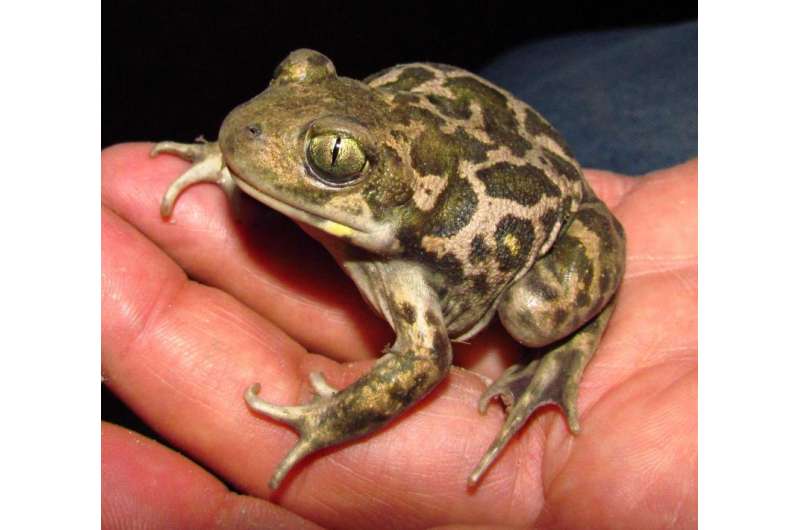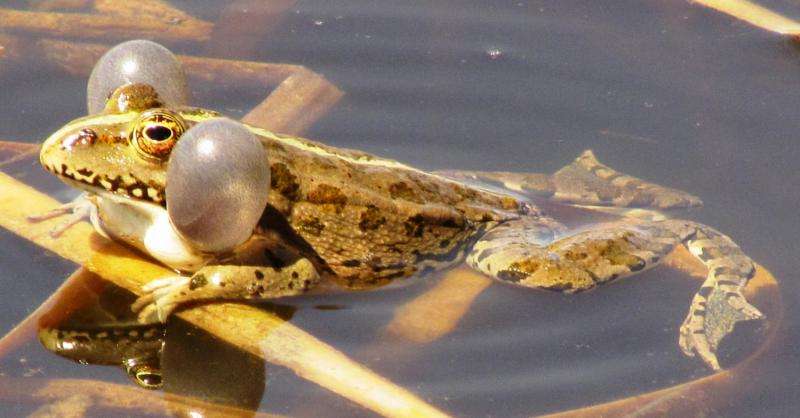The development of amphibians and reptiles through twelve million years of geological history

Together with an international team, Senckenberg scientist Professor Dr. Madelaine Böhme studied the development of the amphibian and reptile fauna in Western Siberia during the past twelve million years. In their study, published today in the scientific journal Peer J, the scientists demonstrate that the species diversity of both groups of animals was noticeably higher in the past than it is today. Among others, for the first time the researchers discovered an Asiatic representative of the extinct frog family Palaeobatrachidae as well as evidence of a giant salamander with a length of up to 1.80 meters.
The Siberian Salamander, four species of brown frogs (genus Rana), four species of toads, one green frog (genus Pelophylax), two lizards and five species of snakes – these 17 species represent the entire recent amphibian and reptile fauna of Western Siberia, which therefore counts among the regions with the lowest species diversity regarding these animal classes in all of Eurasia and Northern Africa. "But this was not always the case," explains Professor Dr. Madelaine Böhme, director of the Senckenberg Centre for Human Evolution and Palaeoenvironment (HEP) at the University of Tübingen, who continues, "Our most recent study shows that the number of amphibian and reptile species used to be much higher in the course of geological history."
The international team of scientists around the paleontologist from Tübingen and Dr. Davit Vasilyan of the JURASSICA Museum in Porrentruy examined fossils from more than 40 excavation sites in Western Siberia, spanning the past twelve million years. These fossils were collected during 40 years of research activity by their Russian colleague, Dr. Vladimir Zazhigin.

"We were able to identify more than 50 different species – from salamanders and frogs to scaled reptiles and turtles. This exceeded even our boldest expectations," says an elated Böhme. Among the team's findings was evidence of a giant salamander, a group of tailed amphibians with a length of up to 1.80 meters that today are only found in rainy regions of Japan and China. Equally unexpected were voucher specimens of several crocodile newts, whose surviving relatives live in modern-day China and Vietnam.
"In addition, for the first time we were able to discover an Asiatic representative of the extinct frog family Paleobatrachidae," adds Böhme, and she continues, "And we also rediscovered an 'old acquaintance' among the fossils: The Siberian Salamander already inhabited the region beyond the Ural Mountains as early as twelve million years ago." Modern representatives of this amphibian genus have adapted to the hostile climatic conditions and survive temperatures as low as minus 40 degrees Celsius frozen in the soil.

The fossil discoveries not only offer insights into the fauna of the past but also allow conclusions regarding climate, precipitation and vegetation. For example, the discovery of a six-million-year-old gecko of the genus Alsophylax indicates that the habitat at that time resembled the modern-day steppes in Kazakhstan. For this time period, during which the Western Siberian plains were also home to jumping mice, camels and ostriches, the team of scientists calculated an annual precipitation of only 250 millimeters. Moreover, the discovery of terrestrial and aquatic turtles, whose last representatives disappeared from Western Siberia around 5 million years ago, suggests a noticeably warmer climate.
"The total of our findings documents Siberia's varied biodiversity and the dynamic climate history of this region: Within a few hundred thousand years, extremely wet regions with four times the current precipitation transformed into areas with an arid steppe climate. The increasingly cooler temperatures likely led to the subsequent loss of numerous species of amphibians and reptiles," adds Böhme in conclusion.
More information: Davit Vasilyan et al. Neogene amphibians and reptiles (Caudata, Anura, Gekkota, Lacertilia, and Testudines) from the south of Western Siberia, Russia, and Northeastern Kazakhstan, PeerJ (2017). DOI: 10.7717/peerj.3025
Journal information: PeerJ





















